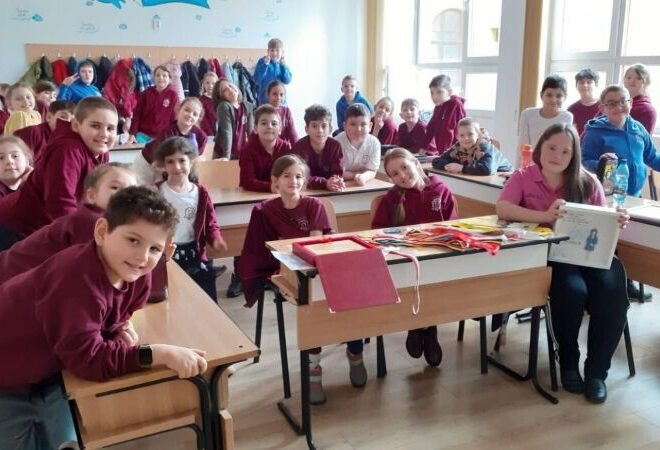
Beyond the Box: How Generative AI is Revolutionizing Toy Accessories and Customization
The New Playbook: AI as the Ultimate Toy Designer and Fabricator
For decades, the world of toy accessories has been a predictable landscape of molded plastic and stitched fabric, carefully curated and mass-produced by large corporations. A doll’s wardrobe, an action figure’s arsenal, or a robot’s attachments were defined by what came in the box or what was available on store shelves. Today, that paradigm is being fundamentally dismantled by one of the most transformative technologies of our time: artificial intelligence. The latest AI Toy Accessories News isn’t just about smarter toys; it’s about a revolutionary shift in how the worlds around those toys are conceived, designed, and created. Generative AI is empowering creators, parents, and even children to become toy designers, moving from a simple text prompt to a tangible, custom-made accessory. This article explores this burgeoning frontier, delving into the technology that makes it possible, the new ecosystem of play it fosters, and the critical considerations for safety and ethics in this AI-driven era of hyper-personalization. We are witnessing the dawn of a new chapter in creative play, where the only limit is imagination itself.
The Generative Revolution: AI as the Ultimate Toy Designer
The core of this transformation lies in generative AI models, which can create novel content—including text, images, and 3D models—from user prompts. This technology is democratizing design, taking it out of the exclusive hands of professional industrial designers and placing it into the hands of the end-user. The latest AI Toy Design News highlights a move from passive consumption to active co-creation, profoundly changing the relationship between a child and their toys.
From Prompt to Prototype: How It Works
The process begins with a simple idea articulated in natural language. A user might type a prompt like, “Design a futuristic, cyberpunk-style jetpack for a 12-inch humanoid toy, with glowing blue thrusters and intricate wiring.” An AI image generator can instantly produce dozens of visual concepts. These concepts serve as blueprints for the next step: creating a 3D model. Emerging text-to-3D AI platforms can then interpret these prompts or images to generate a digital, three-dimensional object file (like an .STL or .OBJ). This file is the digital DNA of the physical accessory. This rapid ideation cycle is a game-changer, making it a hot topic in AI Toy Prototypes News. What once took a professional designer hours or days can now be conceptualized in minutes, allowing for endless iteration and creativity.
Hyper-Personalization at Scale
The most significant impact of this technology is the advent of true hyper-personalization. No longer are two toys identical. A child can design a one-of-a-kind ball gown for their Interactive Doll, a custom-forged battle-axe for their action figure, or a unique sensor array for their educational robot. This trend, a cornerstone of recent AI Toy Customization News, allows a toy to reflect the unique personality and imagination of its owner. This has profound implications for the AI Collectible Toy News space, where unique, user-generated, or AI-generated accessories can create rare, one-of-a-kind collectibles whose value is determined by their originality. The toy becomes a canvas, and the AI-designed accessories are the paint, enabling a level of personal expression previously unimaginable in the mass market.

From Digital Concept to Physical Reality: The New Toy Factory
A digital design is only half the story. The true magic happens when these AI-generated concepts are brought into the physical world. The convergence of generative AI with accessible manufacturing technologies like 3D printing is creating a new, decentralized “toy factory” in homes, schools, and community makerspaces around the globe. This synergy is a leading theme in Toy Factory / 3D Print AI News.
The Role of 3D Printing and AI
Once the AI generates a 3D model file, it can be sent directly to a 3D printer. The accessibility and affordability of consumer-grade 3D printers have made this final step feasible for a broad audience. A child can watch as the accessory they imagined and prompted into existence is built layer by layer. This pipeline—from prompt to 3D model to physical object—is becoming increasingly streamlined. Enthusiasts following Robot Kit News and Modular Robot Toy News are already at the forefront, creating and sharing AI-designed, 3D-printable custom parts that enhance or modify their kits. They might design a new gripper for a robotic arm or a specialized chassis for an AI Vehicle Toy, sharing their creations within a vibrant online community.
Smart Accessories: Integrating Tech into a Physical Form
This revolution extends beyond inert plastic. Generative AI can also be used to design “smart” accessories with integrated electronics. For instance, an AI could be tasked to design a custom backpack for a Humanoid Toy that not only looks aesthetically pleasing but is also perfectly dimensioned to house a small microcontroller, an LED, and a speaker. This directly intersects with developments in AI Toy Sensors News and Voice-Enabled Toy News, where the accessory itself becomes an intelligent, interactive component of the toy. The latest AI Toy App Integration News points toward a future where a mobile app could guide a user through designing a custom accessory, and then allow them to program its embedded electronic functions, creating a seamless link between the digital design world and interactive physical play.
Reshaping the Play-Ecosystem: Broader Implications and Innovations
The ability for consumers to design and create their own toy accessories has cascading effects across the entire toy industry, education, and even family dynamics. It fosters a new ecosystem built on creativity, community, and continuous learning, but it also introduces new challenges that must be addressed responsibly.
The Rise of the Prosumer and Community-Driven Content

This trend marks the rise of the “prosumer”—a consumer who is also a producer. Toy owners are no longer just playing with a finished product; they are actively participating in its ongoing development. This is a major topic in AI Toy Community News, where online platforms are emerging as hubs for sharing designs. An AI Toy Marketplace News headline might soon announce a platform where users can buy, sell, or freely share their AI-generated accessory designs. This shifts the business model for toy companies. The latest AI Toy Brand News suggests that forward-thinking brands may pivot from selling only physical goods to cultivating vibrant ecosystems. They might provide the core toy—the “platform”—and then support a community of creators who develop and share accessories for it, a model already proven in the video game industry with mods and user-generated content.
Educational and Developmental Benefits
The educational potential is immense. Engaging with AI to design and then 3D print an accessory is a powerful, hands-on lesson in STEAM (Science, Technology, Engineering, Arts, and Math). This is a recurring theme in STEM Toy News and AI Learning Toy News. A child designing a functional grappling hook for their Programmable Toy is learning about design constraints, physics, and material properties. This process fosters critical thinking, problem-solving, and digital literacy. It transforms playtime into a project-based learning experience, aligning perfectly with the goals of modern educational toys like those featured in Educational Robot News and Coding Toy News.
Ethical and Safety Considerations
With great creative power comes great responsibility. The rise of AI-generated accessories brings critical safety and ethical questions to the forefront. As reported in AI Toy Safety News, 3D-printed parts, especially from home printers, can have sharp edges, structural weaknesses, or be small enough to pose a choking hazard for young children. There is a need for community standards and parental oversight. Furthermore, AI Toy Ethics News is grappling with complex intellectual property issues. What happens when a user prompts an AI to create an accessory that infringes on an existing copyright, like a famous movie prop? Who owns the rights to an AI-generated design—the user, the AI company, or the toy manufacturer? These are uncharted legal waters that the industry must navigate carefully to foster innovation while protecting creators and consumers.

Navigating the AI-Enhanced Playroom: Best Practices and Future Outlook
As AI-driven customization becomes more mainstream, parents, educators, and toy companies must adapt to this new landscape. Adopting best practices will be key to harnessing the benefits while mitigating the risks. The future of play is interactive, personalized, and co-created, and preparing for it starts now.
For Parents and Educators:
Prioritize Safety First: Always supervise the 3D printing process and inspect finished accessories for sharp edges or small, breakable parts. Use child-safe, non-toxic printing filaments and ensure the final product is age-appropriate.
Foster Creative Exploration: Encourage children to think beyond the first result. Teach them to refine their prompts, experiment with different styles, and think critically about why one design works better than another. Frame it as a creative problem-solving process.
Stay Informed: The technology is evolving rapidly. Follow trusted sources for AI Toy Reviews News and AI Toy Trends News to stay updated on the latest tools, platforms, and safety guidelines.
For Toy Companies and Startups:
Embrace the Platform Model: As seen in AI Toy Startup News, the most innovative companies are building ecosystems. Develop a Toy AI Platform that not only sells a core product but also provides users with the tools and community to create and share their own content.
Focus on Seamless Integration: The user experience is paramount. Invest in intuitive AI Toy App Integration that makes the journey from idea to physical object as easy and magical as possible for a non-technical audience.
Lead on Safety and Ethics: Proactively establish clear terms of service regarding intellectual property and user-generated content. Provide resources, tutorials, and materials recommendations for safe 3D printing to build trust and position your brand as a responsible leader.
Conclusion: The Dawn of Limitless Play
The emergence of AI-generated toy accessories represents a monumental shift in the world of play. We are moving beyond the static, one-size-fits-all model and into a dynamic future of infinite possibility and personalization. This trend is more than just a novelty; it is a convergence of creativity, technology, and community that empowers children to become creators, designers, and innovators. From AI Plush Toy News featuring custom-designed outfits to AI Drone Toy News showcasing community-made performance parts, the impact is being felt across every category. While navigating the challenges of safety and ethics is crucial, the trajectory is clear. The future of toys lies not just in the intelligence embedded within them, but in the limitless creative potential that AI unlocks around them. The playroom of tomorrow will be a workshop of imagination, where every toy can be as unique as the child who dreams it into existence.



